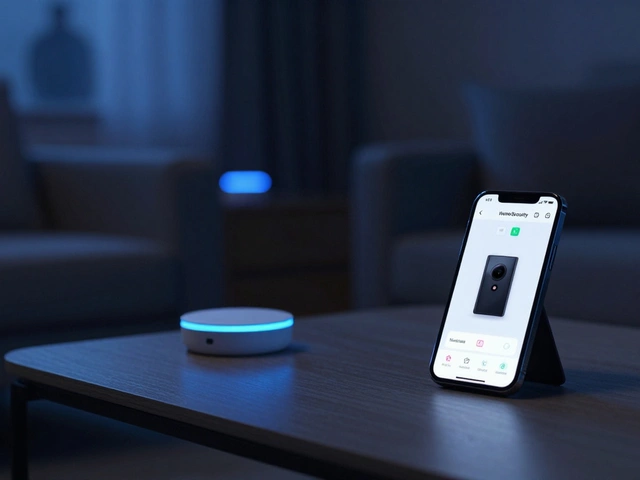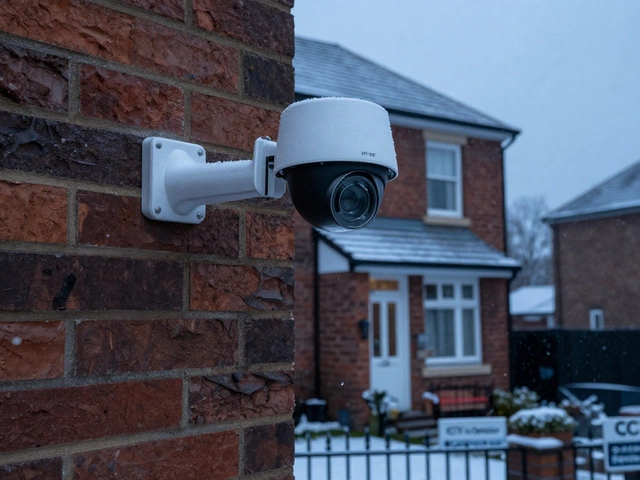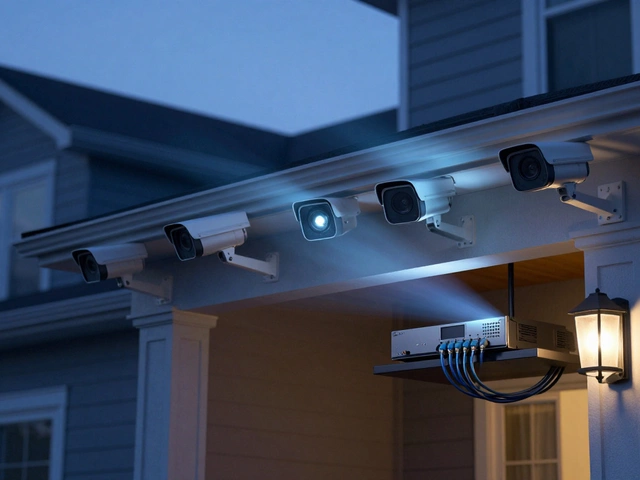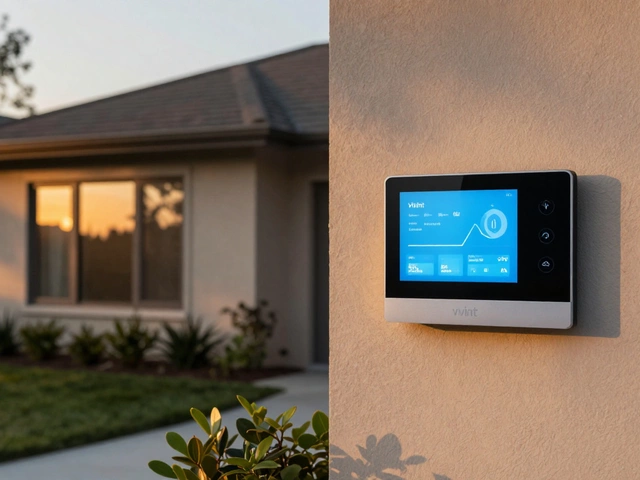Paying for home security isn’t usually the first thing that comes to mind when you think of monthly bills. The mortgage, power, Netflix – sure. But the question pops up: when you sign up for ADT, will you be locked into another monthly payment? And if so, what does your money actually get you? ADT’s blue signs are everywhere, but most folks don’t know the details until they’re knee-deep in a contract or regretting a missed “cancel” deadline. If you’ve wondered whether ADT requires a monthly fee, you’re not alone, and it pays to get the cold, hard facts before signing anything.
Does ADT Always Require a Monthly Fee?
Here’s the honest answer: Yes, ADT monthly fee is almost always required if you want the classic ADT experience. They’ve built their entire business model around professional monitoring – meaning a real human is watching your signals 24/7 and will call the cops (or just check in with you) if something goes wrong. This isn’t some pay-once-and-forget system like you might find on DIY camera kits from a big-box store. You pay every month to keep that monitoring and support going.
Could you buy just the ADT equipment and go without the fee? Technically, it’s possible if you purchase through certain retailers (often the self-setup or "Blue by ADT" gear). But the classic, hardwired ADT security most people think of? That’s subscription-based. That’s right, the monthly cost isn’t just for their blue stickers or a loud siren. It funds the always-on monitoring centers (the US has six, and they boast UL certification and an A+ BBB rating), system support, and, depending on your package, mobile app controls, automation, and even basic repairs.
ADT has been doing this for over 145 years, and their track record isn’t just about technology – it’s about live, professional response. For folks in New Zealand comparing overseas rivals, it basically means you can’t just buy the gear and skip out on the monthly payment, unless you want to do every bit yourself. Sure, there are hacks and workarounds floating around Reddit, but ADT usually doesn’t let you activate the alarm to the point where it can summon help unless your payment is current and the account is active.
How Much Will You Actually Pay Each Month for ADT?
Nobody likes surprises on their bill, and security is no different. ADT’s pricing isn’t always upfront until you’ve been through their online quote or a phone call. But to give you a real-world sense, as of mid-2025, most ADT packages range from USD $25 to $65 per month, depending on features, monitoring level, and extras. (That’s about NZD $40 to $105 on today’s rates, for anyone doing the math.)
Here’s a quick look:
| ADT Package | Monthly Fee (USD, 2025) | What’s Included |
|---|---|---|
| Basic Security | $25-$30 | Intruder & fire alarm monitoring |
| Smart Home | $40-$55 | Monitoring + app control, smart devices |
| Video & Automation | $60-$65 | Video monitoring, smart automation, all-in-one features |
You might be thinking, “That’s just for monitoring, right?” Well, sort of. Sometimes installation is included, but usually there’s an install fee. Some packages sneak in extras like free repairs or smoke monitoring, though you’ve got to check the fine print. Also: these prices are for the US; international pricing (like in NZ or Australia) can vary once you factor in the local ADT franchise or affiliate.
Here’s a little twist. ADT’s rates are rarely negotiable – but every so often, a local authorized dealer will toss in a few months free or discount the install if you look like a serious lead. Don’t expect them to waive the fee long-term, though. That fee is the bread and butter of the business.

What Do You Get for the Monthly Fee?
This is the bit that trips people up: what does that $25 to $65 actually buy you, month in, month out? First, it means professional monitoring. ADT doesn’t just send you an alert and hope for the best – their 24/7 centers call you, contact emergency responders, and follow up if your alarm goes off. If you’re away, your phone’s dead, or you’re in a bind, this can make a massive difference.
Most ADT plans cover:
- Burglary, fire, and smoke monitoring (the essentials)
- Medical response alerts (especially for elderly or high-risk customers)
- System support and troubleshooting, any time
- Maintenance or repairs (on higher-tier plans)
- App controls – arming/disarming, smart home devices, real-time notifications
With pricier plans, you can even tap into full video monitoring, cloud video storage, and home automation. That means your security system can lock doors, turn off lights, detect motion, and let you check live video feeds from your phone – all rolled into that single monthly price.
ADT doesn’t just “ping” you. Their team will actually call authorities if the alarm is confirmed and you can’t answer. False alarm? They verify before dispatch to save you from annoying call-outs. This extra layer of human attention – not just app automation or generic bots – is what makes ADT different.
If you want just the burglar alarm to squawk when triggered and don’t care about monitoring or police dispatch, you might not need ADT at all. Plenty of DIY systems offer no-fee local alarms or push notifications. But if real, fast help matters, the monthly fee starts making sense for a lot of people.
ADT Contract Terms and How to Avoid Nasty Surprises
ADT contracts can feel a bit like joining a gym (but without the sweaty towels). Most ADT plans require a contract – usually three years in the US, sometimes less with special deals or introductory packages. Don’t expect a simple month-to-month. If you cancel early, you’ll likely get hit with a hefty early termination fee, which can be as much as 75% of the remaining payments. Yikes.
If you’re sitting on the fence about security, it’s smart to consider your living situation before you sign. Are you planning to sell up or move within the next year or two? If so, locking into a 36-month ADT contract may be risky. Ask upfront about contract length, cancellation policy, and what happens if you relocate – sometimes they’ll let you transfer the system. But sometimes, you’re just stuck paying until the term ends.
Tips for navigating those dreaded contracts:
- Ask for the total contract cost in writing (not just monthly fee)
- Check if flexible, short-term plans are available (rare, but worth trying)
- Avoid surprises: ask about all “miscellaneous fees,” including installation, maintenance, and tech support
- If moving, see if you can relocate the system or transfer the contract
- Keep a copy of every document – digital or printed
One thing that stings: promo prices usually jump up after the first year. So if the first year lures you in at a discount, watch for that increase on your next bill. Read all the fine print and keep a calendar reminder for your contract anniversary. Fancy sales reps may breeze through this part, but real-life users in forums often mention shock when that price suddenly goes up.

Can You Use ADT Equipment Without the Monthly Monitoring Fee?
This is a question that gets a surprising number of hits in home security forums. Maybe you moved into a place that already has ADT equipment installed, or you’re curious if you can keep the bells and whistles without the recurring charge. Here’s what really happens: if it’s “classic” ADT gear, it’s almost always locked to their monitoring network. The alarm panel may work as a local siren, but the fancier features (remote alerts, smart home stuff, calling the police) get disabled fast when you cancel monitoring. Some new self-setup products (like Blue by ADT) are more flexible, letting you go DIY and skip the fee, but you lose access to pro monitoring, and some smart home integrations may not work at all.
If you’re technically savvy and just want a loud noise when something triggers, you might get by using basic sensors and sirens without monitoring. But for mobile control, cloud storage, and police calls – you’re out of luck. ADT uses proprietary tech, and unlocking it for third-party monitoring or automation isn’t simple. Some people try to “hack” older panels for use with services like Alarm.com or Ring, but success isn’t guaranteed. You might save the monthly cost, but you’ll lose most of the functionality you actually want with ADT gear.
Best move if you want flexible security? Compare ADT with other brands that offer one-time equipment purchases and choose a system that matches your needs (and budget). Sure, ADT’s reputation is strong, but don’t pay for monthly features you’ll never use. Ask for a demo before you buy, and push the sales team to clarify what’s available without monitoring, so you aren’t left with an expensive paperweight.






